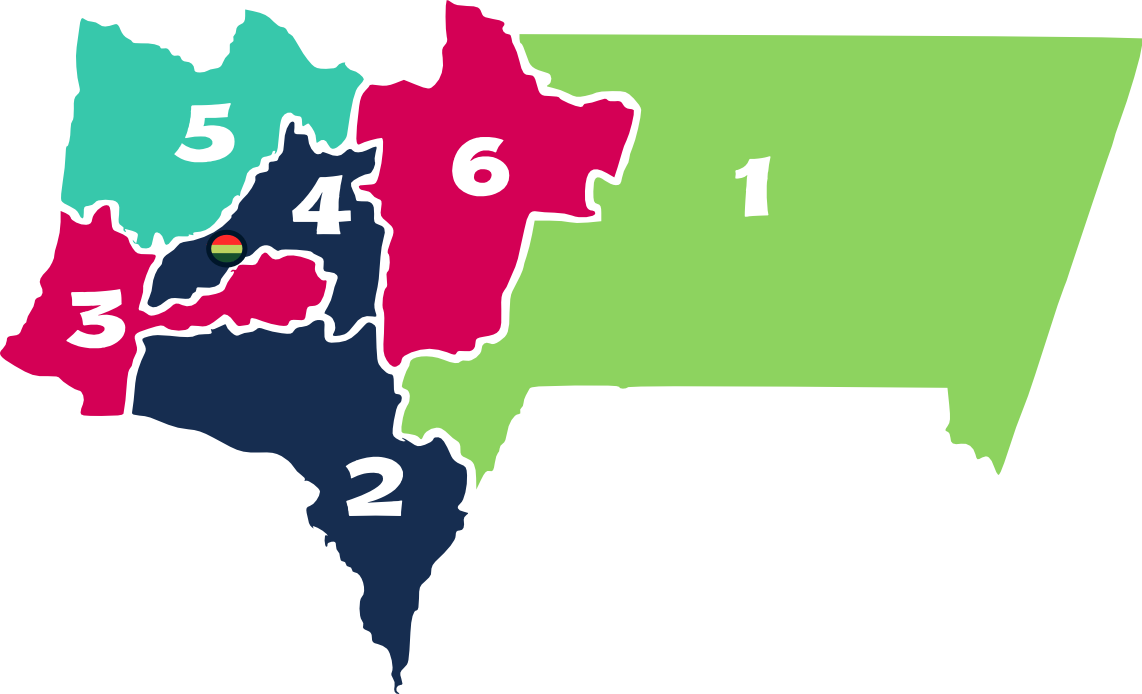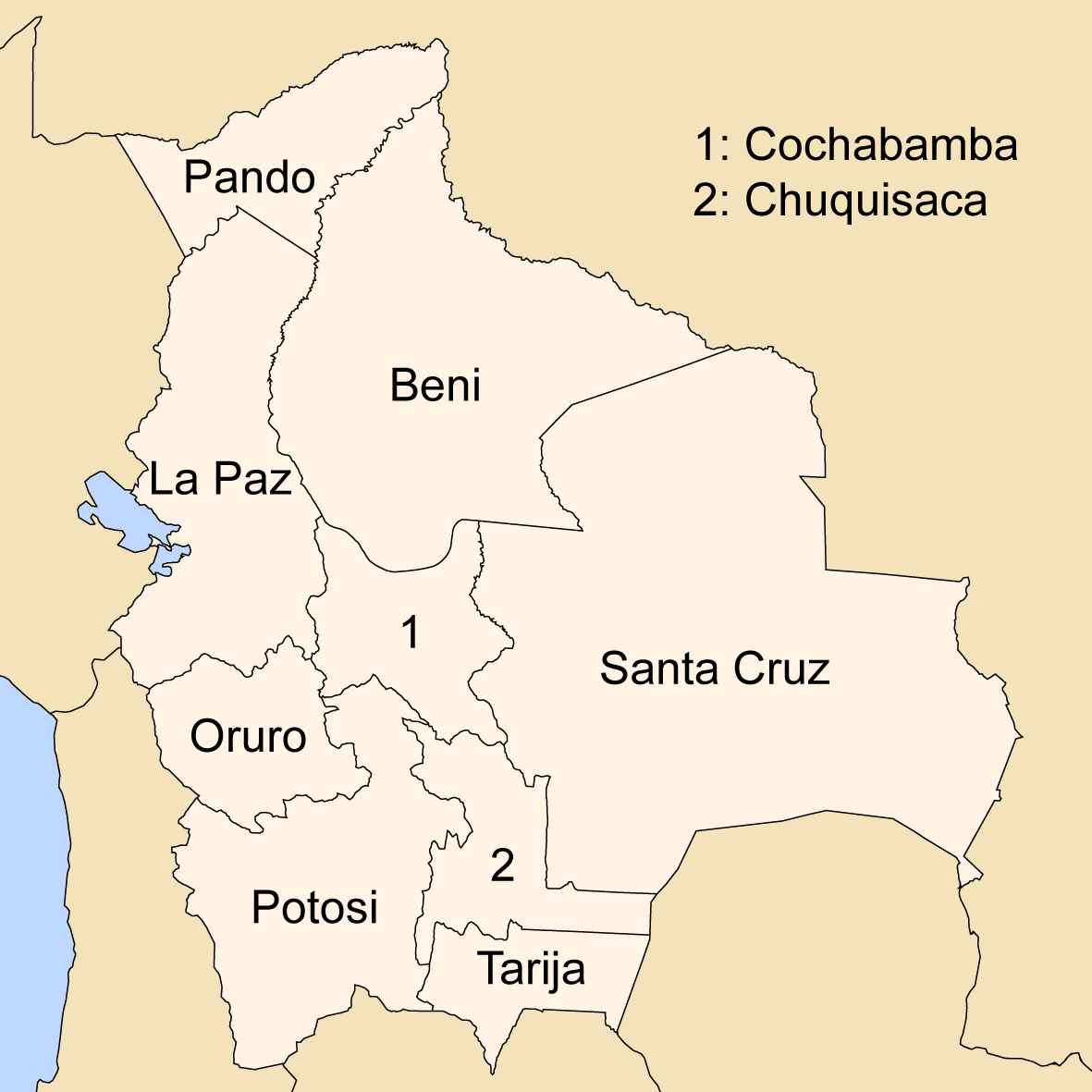|
Villamontes
Villamontes or Villa Montes is a town in the Tarija Department in south-eastern Bolivia. Location Villamontes is the administrative center of Villamontes Municipality and is situated at 388 m above sea level, on the left bank of Río Pilcomayo where the river crosses the Sierra del Aguarague mountain range and flows southeast into the Chaco-Foreland. Geography Villamontes is located in the subhumid tropical zone, with a distinct dry season from June to September. West of the town in a north-southerly direction ranges the sub Andean ''Sierra del Aguarague'', with a summit of 1,390 m 7 km west of Villamontes. The town is crossed by ''Río Caiguami'' which discharges into ''Río Pilcomayo'' on the southern outskirts of Villamontes. Villamontes has recorded the hottest temperature ever in Bolivia, , several times, most recently on 29 October 2010. History During the Chaco War between Bolivia and Paraguay (1932–1935) Villamontes accommodated the headquarters of the ... [...More Info...] [...Related Items...] OR: [Wikipedia] [Google] [Baidu] |
Provinces Of Bolivia
A province is the second largest administrative division in Bolivia, after a department. Each department is divided into provinces. There are 112 provinces. The country's provinces are further divided into 337 municipalities which are administered by an alcalde and municipal council. List of provinces Beni Department Chuquisaca Department Cochabamba Department La Paz Department Oruro Department Pando Department Potosí Department Santa Cruz Department Tarija Department See also * Departments of Bolivia Bolivia is a unitary state consisting of nine department (administrative division), departments (). Departments are the primary subdivisions of Bolivia, and possess certain rights under the Constitution of Bolivia. Each department is represented ... * Municipalities of Bolivia Sources Instituto Nacional de Estadística - Bolivia(Spanish) {{Articles on second-level administrative divisions of South American countries Su ... [...More Info...] [...Related Items...] OR: [Wikipedia] [Google] [Baidu] |
Chaco War
The Chaco War (, Mombe’uhára Paraguái ha Boliviaygua Jotopa III, Cháko Ñorairõ rehegua Secretaría Nacional de Cultura de Paraguay) was fought from 1932 to 1935 between and , over the control of the northern part of the Gran Chaco region (known in Spanish as the ''Chaco Boreal'') of |
Gran Chaco Province
Gran Chaco is a province in the eastern part of Bolivia, located in the department of Tarija. The province voted to become an autonomous region on December 6, 2009. Location ''Gran Chaco'' province is one of six provinces in the Tarija Department. It is located between 21° 00' and 22° 17' south and between 62° 16' and 64° 18' west. The province borders Chuquisaca Department in the north, Burnet O'Connor Province in the north-west, Aniceto Arce Province in the south-west, Argentina in the south, and Paraguay in the east. The province extends over 200 km from north to south, and 200 km from east to west. Population The main language of the province is Spanish, spoken by 98.4%, while 11.5% of the population speak Quechua, 3.0% speak Aymara, and 2.7% Guaraní. The population increased from 74,612 inhabitants (1992 census) to 116,318 (2001 census), an increase of 55.9%. - 41.9% of the population are younger than 15 years old. 50.7% of the population have no a ... [...More Info...] [...Related Items...] OR: [Wikipedia] [Google] [Baidu] |
Tarija Department
Tarija () is a department in Bolivia. It is located in south-eastern Bolivia bordering with Argentina to the south and Paraguay to the east. According to the 2024 census, it has a population of 534,348 inhabitants. It has an area of . The city of Tarija is the capital of the department. Subdivisions The department is divided into five provinces and one autonomous region: # Gran Chaco Province (autonomous region) # Aniceto Arce Province # José María Avilés Province # Cercado Province # Eustaquio Méndez Province # Burdett O'Connor Province Notable places in Tarija include: * Villamontes in the department's oil-producing eastern scrubland. Villamontes has recorded the hottest temperature ever in Bolivia, , several times, most recently on 29 October 2010. * Bermejo, a border town adjoining Aguas Blancas, Argentina * Yacuiba, a border town with Argentina. The Department of Tarija is renowned for its mild, pleasant climate, and comprises one of the country's foremost ... [...More Info...] [...Related Items...] OR: [Wikipedia] [Google] [Baidu] |
Daniel Salamanca Urey
Daniel Domingo Salamanca Urey (8 July 1869 – 17 July 1935) was a Bolivian lawyer and politician who served as the 33rd president of Bolivia from 1931 to 1934. He was overthrown in a ''coup d'état'' on 27 November 1934, during the country's disastrous Chaco War with Paraguay. Bolivian historians have referred to him as "El Hombre Símbolo" (the symbolic man), as a president who carefully cultivated an appearance of integrity and nationalism. Political career Born in Cochabamba, Salamanca studied law at the Higher University of San Simón, before being elected to Bolivia's Chamber of Deputies in 1899 for the Liberal Party. Two years later, President José Manuel Pando appointed him Finance Minister. Salamanca was a prominent opposition leader in 1907 and roundly attacked the Pinilla-Soler Treaty that had divided the Chaco region between Bolivia and Paraguay. Salamanca eventually split with the Liberals, however, and helped to found the new Republican Party, running unsucc ... [...More Info...] [...Related Items...] OR: [Wikipedia] [Google] [Baidu] |
Bernardino Bilbao Rioja
Bernardino Bilbao Rioja (20 May 1895 in Arampampa – 13 May 1983 in La Paz) was a Bolivian officer who served during the Chaco War (1932–35). He pioneered the use of air forces in combat (the first to be used in this capacity in South America). Bilbao had already made enemies among his cohorts when he refused to participate in the 1930 coup against President of Bolivia Hernando Siles Reyes. This enmity led him to be vetoed for most major promotions within the military, both during the war and after. One of the reasons for the 1934 military uprising that toppled the Constitutional President Daniel Salamanca Urey was the latter's desire to replace the ineffective current commanders with Generals Lanza and Bilbao Rioja at the head of the army. After the war, Bilbao's popularity converted him into a potential enemy to the aspirations of the likes of Col. David Toro Ruilova and Gen. Enrique Peñaranda. In particular, it was rumored that Bilbao would present himsel ... [...More Info...] [...Related Items...] OR: [Wikipedia] [Google] [Baidu] |
Bolivia
Bolivia, officially the Plurinational State of Bolivia, is a landlocked country located in central South America. The country features diverse geography, including vast Amazonian plains, tropical lowlands, mountains, the Gran Chaco Province, warm valleys, high-altitude Andean plateaus, and snow-capped peaks, encompassing a wide range of climates and biomes across its regions and cities. It includes part of the Pantanal, the largest tropical wetland in the world, along its eastern border. It is bordered by Brazil to the Bolivia-Brazil border, north and east, Paraguay to the southeast, Argentina to the Argentina-Bolivia border, south, Chile to the Bolivia–Chile border, southwest, and Peru to the west. The seat of government is La Paz, which contains the executive, legislative, and electoral branches of government, while the constitutional capital is Sucre, the seat of the judiciary. The largest city and principal industrial center is Santa Cruz de la Sierra, located on the Geog ... [...More Info...] [...Related Items...] OR: [Wikipedia] [Google] [Baidu] |
Río Pilcomayo
Pilcomayo (in Hispanicized spelling) (Quechua Pillkumayu or Pillku Mayu, ''pillku'' red, ''mayu'' river, "red river", Guarani Ysyry Araguay ) is a river in central South America. At long, it is the longest western tributary of the Paraguay River. Its drainage basin is in area, and its mean discharge is . Along its course, the Pilcomayo silts up and splits into two main branches, North and South. After some distance, these branches rejoin to form the Lower Pilcomayo. The Pilcomayo rises in the foothills of the Andes mountain range in the Oruro Department in Bolivia, east of Lake Poopó. The Jach'a Juqhu River is considered the origin of the Pilcomayo. Upstream the Jach'a Juqhu River successively receives the names Aguas Calientes and Kachi Mayu. From the confluence with the Chillawa ''(Chillahua)'', the river is called Pilcomayo. [...More Info...] [...Related Items...] OR: [Wikipedia] [Google] [Baidu] |
Departments Of Bolivia
Bolivia is a unitary state consisting of nine department (administrative division), departments (). Departments are the primary subdivisions of Bolivia, and possess certain rights under the Constitution of Bolivia. Each department is represented in the Plurinational Legislative Assembly—a bicameralism, bicameral legislature consisting of the Senate and the Chamber of Deputies. Each department is represented by four Senators, while Deputies are awarded to each department in proportion to their total population. Out of the nine departments, La Paz Department (Bolivia), La Paz was originally the most populous, with 2,706,351 inhabitants as of 2012 but the far eastern department of Santa Cruz Department (Bolivia), Santa Cruz has since surpassed it by 2020; Santa Cruz also claims the title as the largest, encompassing . Pando Department, Pando is the least populated, with a population of 110,436. The smallest in area is Tarija Department, Tarija, encompassing . Departments Forme ... [...More Info...] [...Related Items...] OR: [Wikipedia] [Google] [Baidu] |
Petroleum
Petroleum, also known as crude oil or simply oil, is a naturally occurring, yellowish-black liquid chemical mixture found in geological formations, consisting mainly of hydrocarbons. The term ''petroleum'' refers both to naturally occurring unprocessed crude oil, as well as to petroleum products that consist of refining, refined crude oil. Petroleum is a fossil fuel formed over millions of years from anaerobic decay of organic materials from buried prehistoric life, prehistoric organisms, particularly planktons and algae, and 70% of the world's oil deposits were formed during the Mesozoic. Conventional reserves of petroleum are primarily recovered by oil drilling, drilling, which is done after a study of the relevant structural geology, sedimentary basin analysis, analysis of the sedimentary basin, and reservoir characterization, characterization of the petroleum reservoir. There are also unconventional (oil & gas) reservoir, unconventional reserves such as oil sands and oil sh ... [...More Info...] [...Related Items...] OR: [Wikipedia] [Google] [Baidu] |
Census
A census (from Latin ''censere'', 'to assess') is the procedure of systematically acquiring, recording, and calculating population information about the members of a given Statistical population, population, usually displayed in the form of statistics. This term is used mostly in connection with Population and housing censuses by country, national population and housing censuses; other common censuses include Census of agriculture, censuses of agriculture, traditional culture, business, supplies, and traffic censuses. The United Nations (UN) defines the essential features of population and housing censuses as "individual enumeration, universality within a defined territory, simultaneity and defined periodicity", and recommends that population censuses be taken at least every ten years. UN recommendations also cover census topics to be collected, official definitions, classifications, and other useful information to coordinate international practices. The United Nations, UN's Food ... [...More Info...] [...Related Items...] OR: [Wikipedia] [Google] [Baidu] |





